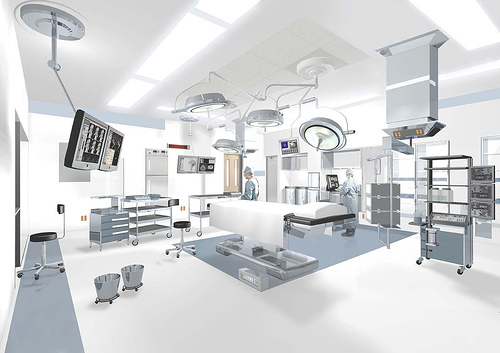Cleveland Clinic Designs Audiovisual System

Follow us
Add us as a preferred source on Google
- Cleveland Clinic's Heart and Vascular Institute is one of the largest cardiovascular and thoracic specialty groups in the world, providing patients with expert medical management and a full range of therapies. Cleveland Clinic’s areas of expertise combine research, education and clinical practice to provide innovative and scientifically based treatments for cardiac, vascular, esophageal, and thoracic disease. The commitment of the physicians and scientists to the prevention and cure of cardiovascular disease has led to innovative care, better outcomes and improved quality of life for patients. This year, U.S.News & World Report ranked Cleveland Clinic #1 in heart care for the 14th straight year.
- In October 2008, the Heart and Vascular Institute will open a new TBD square foot facility. Promoting cardiovascular research and education are primary mandates of the Cleveland Clinic. In order to meet these commitments, AVI-SPL Inc. and Emcore teamed with the Clinic to design a state-of-the-art audiovisual system architecture into the new facility.
- The basic system requirements were as follows. Video, audio, and data from 25 operating and procedure rooms throughout the clinic had to be routed to a central location, a central A/V Production facility on site. At this Production site, the various signals would be switched and processed to create original content from the raw video feeds. This content would then be made available to conference and training rooms throughout the clinic, as well as the meeting and conference facilities of a nearby hotel.
- The most difficult part of the system architecture was the aggregation of all the various signal types from 25 operating and procedure rooms into a single Production room. The fact that RF radiation can not be tolerated in this medical environment, as well as the fact that the longest distances from operating rooms to Production room was TBD feet, made it necessary to use optical fiber instead of copper/electrical transport.
- A variety of signal types and formats were required in the operating rooms including analog composite video, 1600 X 1200 VGA/HV, HD-SDI digital video, simplex and duplex analog audio, and 10/100 Ethernet. A system was needed that could transport the various signal formats, and be flexible and portable as equipment may be moved from room to room.
- The Optiva optical transport system from Emcore was chosen. The Optiva system is modular with respect to video/audio/data formats – different formats may be combined on a single 3RU insert card. Within the Production room, these insert cards are housed within a chassis that accommodates 16 such insert cards. In the spatially dispersed operating rooms, the insert cards are housed within 1- or 2-slot enclosures that may be easily moved from room to room.
- Switching is realized in the A/V Production room by the Emcore OLX-3000 physical layer switch. This switch provides flexible routing of optical wavelengths carrying any of the A/V signal formats. By adding additional blades to the OLX-3000, an upgrade path consisting of up to 288 X 288 signal connectivity may be realized.
scn Newsletter
A daily selection of the top stories for AV integrators, resellers and consultants. Sign up below.
TOPICS
The AVNetwork staff are storytellers focused on the professional audiovisual and technology industry. Their mission is to keep readers up-to-date on the latest AV/IT industry and product news, emerging trends, and inspiring installations.
MORE FROM SCN
